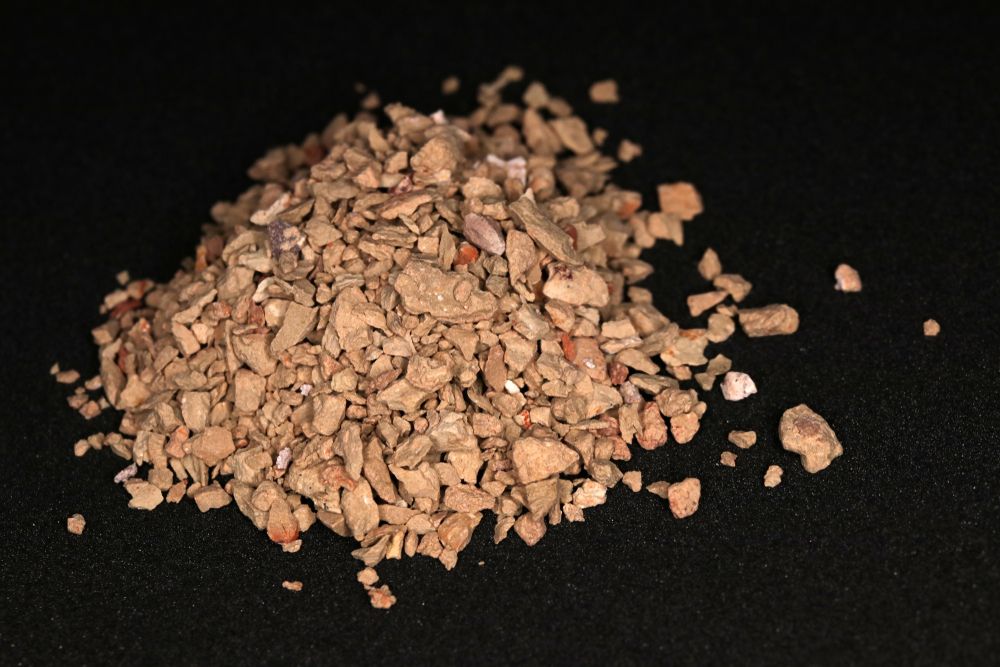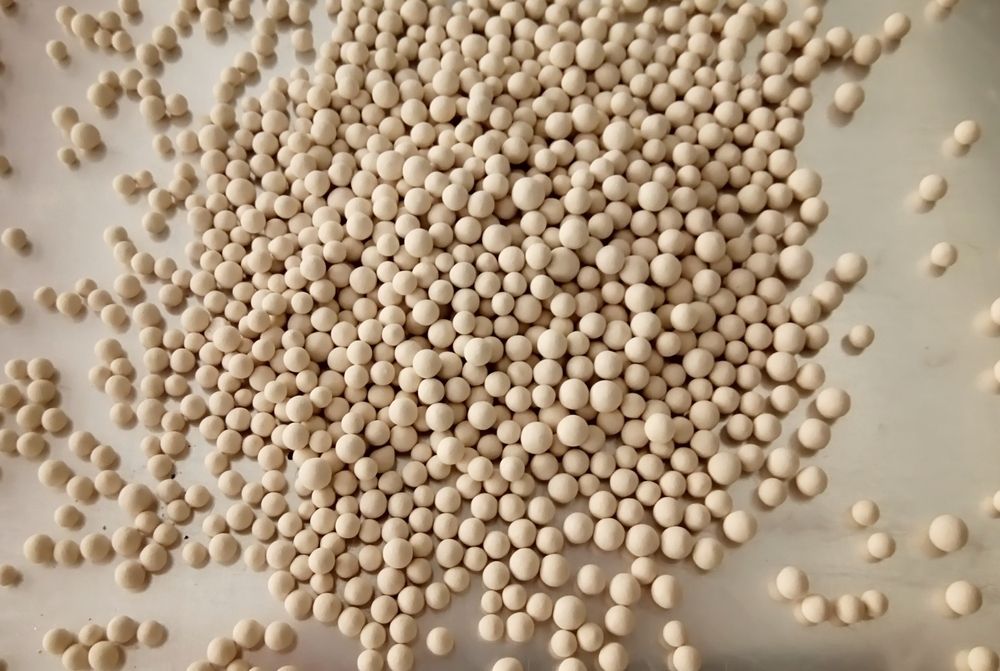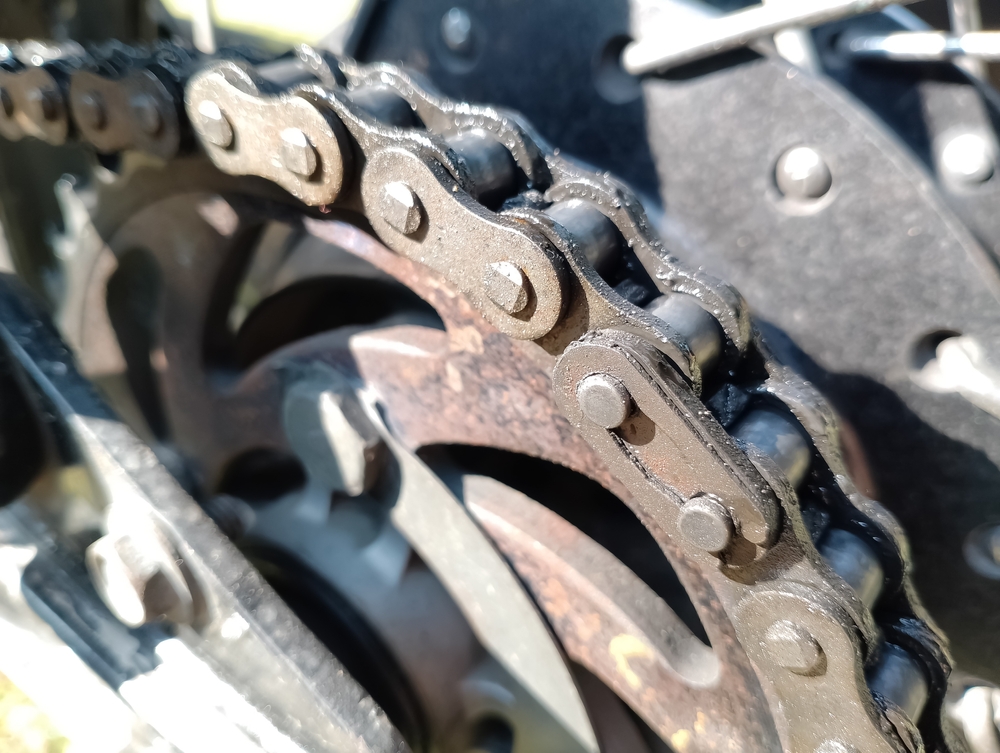When it comes to protecting your valuable cargo, equipment, or products from moisture damage, understanding the different types of desiccants available can save Australian businesses thousands of dollars annually. Whether you’re shipping containers through humid Queensland ports, storing mining equipment in the Pilbara’s scorching heat, or maintaining pharmaceutical integrity in Melbourne’s unpredictable weather, choosing the wrong moisture control solution can prove catastrophic.
From the familiar silica gel packets found in your new shoes to industrial-grade molecular sieves protecting sensitive electronics, desiccant types vary dramatically in performance, cost, and application suitability. With Australian suppliers like Desiccant Australia and Protection Experts offering everything from budget-friendly clay desiccants to premium moisture absorbers, the choice isn’t always straightforward.
This comprehensive guide cuts through the confusion by examining each desiccant material type, including silica gel vs clay vs molecular sieve comparisons, while addressing Australia’s unique climate challenges and regulatory requirements. We’ll explore real-world applications from Darwin’s tropical conditions to Alice Springs’ arid environment, providing practical selection criteria that balance moisture absorption effectiveness with cost considerations.
By the end, you’ll understand exactly which desiccant solution fits your specific needs, whether you’re complying with FSANZ food packaging standards, protecting valuable cargo from “container rain,” or maintaining equipment in Australia’s harshest conditions. Let’s dive into the science behind effective humidity control and discover your optimal moisture protection strategy.
Understanding Desiccant Fundamentals
What Are Desiccants and How They Work
Desiccants are specialised hygroscopic materials that actively attract and hold water molecules from their surrounding environment through two distinct processes. The primary mechanism, called adsorption, involves water vapour molecules adhering to the surface of the moisture absorbing material without being chemically absorbed into its structure. This differs from absorption, where moisture is actually taken into the material itself, creating a physical change in the desiccant’s composition.
Australia’s diverse climate zones present unique challenges for moisture control, from the tropical humidity of Darwin reaching 90% relative humidity to the arid conditions of Alice Springs with less than 30% RH. CSIRO research has documented how these extreme variations affect product integrity during storage and transport across the continent. Humidity control becomes particularly critical when goods travel between these contrasting environments, such as shipping containers moving from Queensland’s humid ports to South Australia’s dry inland regions.
The science behind desiccant materials involves creating microscopic surface areas that attract water molecules through van der Waals forces. Modern moisture absorbers can feature surface areas exceeding 700 square metres per gram, allowing them to trap significant quantities of water vapour whilst remaining physically unchanged.
Key Performance Metrics
Understanding desiccant performance requires evaluating several critical factors that determine effectiveness in real-world applications. Moisture absorption capacity represents the maximum amount of water vapour a desiccant can hold, typically expressed as a percentage of the material’s dry weight.
Temperature stability defines the operational range where desiccants maintain their effectiveness:
- Clay desiccants: Effective below 50°C, suitable for moderate Australian climates
- Silica gel: Functions up to 105°C, ideal for most industrial applications
- Molecular sieves: Operate from -40°C to 200°C, perfect for extreme conditions
These performance characteristics directly influence cost-effectiveness, with moisture control solutions ranging from $2 per kilogram for basic clay materials to $32 per kilogram for premium molecular sieves in the Australian market.
Comprehensive Desiccant Type Analysis
Silica Gel: The Versatile Workhorse
Silica gel dominates the Australian moisture control market as the most recognisable and widely applied desiccant material. This synthetic form of silicon dioxide features an intricate network of microscopic pores that create surface areas reaching 750 square metres per gram, enabling exceptional moisture absorption capabilities.

Performance Characteristics
The effectiveness of silica gel desiccants stems from their ability to adsorb between 35-40% of their weight in water vapour under optimal conditions. These moisture absorbers perform exceptionally well in moderate temperature ranges of 20-32°C, making them ideally suited for Australia’s temperate coastal cities like Melbourne and Sydney. Silica gel packets demonstrate peak efficiency in high relative humidity environments exceeding 50% RH, which corresponds perfectly with conditions commonly encountered in Queensland’s tropical ports and Western Australia’s coastal regions.
Food Standards Australia New Zealand (FSANZ) has approved specific grades of silica gel for indirect food contact applications, ensuring compliance with the Australia New Zealand Food Standards Code. This regulatory approval makes silica gel desiccants the preferred choice for pharmaceutical packaging, vitamin bottles, and food industry applications where product safety remains paramount.
Applications and Advantages
Australian suppliers like Australian Inhibitor report strong demand across diverse industries requiring reliable humidity control. Consumer electronics manufacturers frequently specify silica gel packets for protecting sensitive components during shipping through Australia’s varied climate zones. The pharmaceutical sector relies heavily on these moisture control solutions to maintain drug stability and comply with Therapeutic Goods Administration (TGA) requirements.
Current Australian market pricing positions silica gel at $4-10 per kilogram, representing a moderate cost option that balances performance with affordability. The material’s chemically inert nature and non-toxic properties provide additional safety margins for consumer applications, whilst its wide availability through retailers like Bunnings ensures accessibility for small-scale users.
Limitations and Considerations
Despite their versatility, silica gel desiccants exhibit reduced effectiveness in ultra-low humidity environments below 10% relative humidity. Temperature cycling can cause partial moisture desorption, potentially compromising protection during transport across Australia’s temperature extremes. Traditional indicating silica gel containing cobalt chloride raises health concerns, prompting many Australian suppliers to transition towards safer methyl violet indicators.
Clay Desiccants: Natural and Cost-Effective
Clay desiccants manufactured from naturally occurring montmorillonite represent the most economical moisture absorption solution available in the Australian market. These desiccant materials form through controlled drying of magnesium aluminium silicate, creating layered crystalline structures that attract water molecules to both internal and external surfaces.

Montmorillonite Clay Properties
The moisture absorption capacity of clay desiccants typically ranges between 25-30% by weight, whilst maintaining excellent performance in stable temperature conditions below 50°C. This temperature limitation makes them particularly suitable for Australia’s southern regions and indoor storage applications where extreme heat exposure remains unlikely. The natural composition of montmorillonite clay provides inherent environmental benefits, being completely biodegradable and requiring minimal processing compared to synthetic alternatives.
Clay moisture absorbers hold Generally Recognised as Safe (GRAS) status under FSANZ regulations, enabling their use in food-contact applications with appropriate packaging. The regeneration capabilities of clay desiccants allow for repeated use at relatively low temperatures without substantial deterioration, making them attractive for cost-conscious applications.
Economic and Environmental Benefits
Australian pricing for clay desiccants ranges from $2-4 per kilogram, representing 50-75% cost savings compared to silica gel alternatives. This economic advantage becomes particularly significant for large-volume applications such as shipping container protection, where companies like Protection Experts Australia specify clay-based moisture absorbers for cost-effective cargo protection.
The sustainability credentials of clay desiccants align with growing environmental consciousness among Australian businesses. These naturally occurring materials require minimal energy for processing and create no harmful waste products during disposal, supporting corporate sustainability initiatives across mining, agriculture, and manufacturing sectors.
Optimal Use Cases
Clay desiccants excel in applications requiring large-volume moisture control with stable operating conditions. Australian exporters frequently specify these humidity control solutions for shipping containers travelling through predictable temperature ranges, particularly for non-critical cargo where cost optimisation remains prioritised. Mining companies utilise clay moisture absorbers for equipment storage in controlled warehouse environments, whilst agricultural operators rely on them for grain storage applications where temperature stability can be maintained.
Molecular Sieves: Precision Moisture Control
Molecular sieves represent the most technically advanced category of desiccant materials available to Australian industries. These synthetic crystalline aluminosilicates feature precisely engineered pore structures that enable selective adsorption based on molecular size, making them indispensable for applications requiring exact moisture control specifications.

Advanced Performance Features
The uniform pore structure of molecular sieve desiccants enables exceptional performance across demanding operational parameters. Different pore sizes provide targeted capabilities, with 3Å varieties excelling in polar liquid drying, 4Å types handling general dehydration tasks, and 13X molecular sieves offering the broadest adsorption range. These moisture absorbers maintain effectiveness in ultra-low humidity environments below 10% relative humidity, where conventional desiccant types struggle to provide adequate protection.
Temperature stability represents a crucial advantage for Australian applications, with molecular sieves maintaining performance from -40°C to 200°C without significant moisture desorption. This characteristic proves invaluable for mining operations in the Pilbara, where equipment faces extreme temperature cycling, and for aerospace applications where thermal stability remains critical.
Premium Applications
Australian pharmaceutical manufacturers increasingly specify molecular sieve technology for protecting active pharmaceutical ingredients (APIs) and sensitive biological samples. The precision humidity control capabilities ensure product stability whilst meeting stringent TGA requirements for therapeutic goods. Electronics manufacturers utilise these desiccant materials for semiconductor production and precision instrument protection, where even minimal moisture exposure can cause catastrophic failure.
Cost-Benefit Analysis
Molecular sieves command premium pricing between $12-32 per kilogram in the Australian market, reflecting their sophisticated manufacturing processes and superior performance characteristics. However, their regeneration capabilities allow for 100+ reuse cycles with minimal performance degradation, often providing superior long-term value despite higher initial costs. For critical applications where failure costs exceed desiccant expenses, molecular sieve technology delivers unmatched reliability and performance assurance.
Selection Framework and Australian Context
Environmental Condition Assessment
Choosing the appropriate desiccant types requires thorough analysis of Australia’s diverse environmental conditions that directly impact moisture control effectiveness. Temperature variations across the continent range from Darwin’s consistent 30-35°C tropical heat to Tasmania’s winter lows approaching freezing, creating unique challenges for humidity control systems.
Moisture absorption requirements vary significantly based on regional climate zones and seasonal patterns. Northern Queensland’s wet season can sustain 80-90% relative humidity for months, demanding aggressive desiccant materials with high capacity. Conversely, South Australia’s arid regions rarely exceed 40% relative humidity, allowing for more economical clay desiccants in many applications.
Shipping routes between Australian ports present additional complexities, as cargo experiences dramatic environmental transitions. Container shipments travelling from Perth’s Mediterranean climate to Darwin’s tropical conditions require desiccant solutions capable of handling these extreme variations without performance degradation.
Regulatory Compliance Requirements
Australian businesses must navigate complex regulatory frameworks when selecting moisture control solutions for different applications. Food Standards Australia New Zealand (FSANZ) establishes strict requirements for desiccants used in food packaging, mandating that materials cannot pose ingestion risks or contaminate food products.
The Therapeutic Goods Administration (TGA) oversees pharmaceutical applications, requiring desiccant materials to meet stringent purity standards for drug packaging. Industrial applications must comply with relevant Australian Standards (AS/NZS) covering packaging, contamination control, and workplace safety protocols.
Cost-Performance Optimisation
Effective desiccant selection balances initial purchase costs against long-term operational value and potential failure consequences. Australian suppliers like Desiccant Australia provide cost analysis tools that factor in absorption capacity, replacement frequency, and protection value for specific applications.
Volume pricing arrangements with local distributors can significantly reduce per-unit costs for large-scale operations. Remote mining and agricultural applications must also consider logistics expenses and replacement scheduling when evaluating total cost of ownership for different humidity control technologies.
Practical Implementation Guide
Dosage Calculations
Determining the correct amount of desiccant materials requires understanding standardised measurement systems and local Australian industry practices. Professional applications typically reference MIL-SPEC units, defined as the quantity of desiccant that absorbs 3.0 grams of water at 20% relative humidity and 6.0 grams at 40% relative humidity at 25°C.
Australian logistics companies recommend using 5-10% of product weight as a baseline calculation for moisture control applications. For shipping containers, this translates to approximately 8-12 standard units per 20-foot container under moderate conditions.
Monitoring and Replacement
Effective humidity control systems require regular monitoring protocols to ensure continued protection. Visual indicator systems provide immediate feedback on desiccant saturation levels, with colour changes typically occurring at 8-15% moisture content by weight. Australian suppliers emphasise establishing replacement schedules based on expected saturation rates and environmental exposure conditions, particularly important for remote operations where logistics planning becomes critical for maintaining moisture absorption effectiveness.
Making the Right Choice for Your Application
Selecting optimal desiccant types requires matching material capabilities to specific requirements whilst balancing performance, cost, and regulatory compliance. Silica gel suits most consumer applications, clay desiccants provide economical bulk solutions, and molecular sieves deliver precision moisture control for critical operations. Leverage Australian supplier expertise from companies like Australian Inhibitor to ensure your humidity control strategy meets local conditions and regulatory standards effectively.
Look no further than Australian Inhibitor for your commercial desiccant solutions. We bring over 65 years of experience and are here to help with corrosion protection for your valuable products and cargo, backed by outstanding customer service.
Contact us by calling 03 9768 2322 or by filling in our online contact form and we will get back to you
Frequently Asked Questions
Q1: What’s the difference between silica gel and clay desiccants for Australian shipping containers?
Silica gel offers 35-40% moisture absorption and works well in moderate temperatures, making it suitable for general shipping. Clay desiccants absorb 25-30% moisture but cost significantly less ($2-4/kg vs $4-10/kg). For Australian shipping containers facing “container rain,” clay-based moisture absorbers with calcium chloride can absorb up to 300% of their weight, making them more cost-effective for large-volume sea transport through humid ports like Darwin and Brisbane.
Q2: Are desiccants safe for food packaging under FSANZ regulations?
Yes, but only specific types. Under the Australia New Zealand Food Standards Code, Standard 1.1.1-10(11) requires that desiccants must not pose risks if accidentally ingested. Food-grade silica gel and certain clay desiccants meet FSANZ requirements for indirect food contact. Molecular sieves are generally not approved for food applications. Always verify packaging prevents direct food contact and use suppliers who provide FSANZ-compliant certifications for your moisture control needs.
Q3: Which desiccant works best in Australia’s extreme heat conditions?
Molecular sieves perform best in extreme temperatures, maintaining effectiveness from -40°C to 200°C without moisture desorption. This makes them ideal for mining equipment in the Pilbara or outback storage facilities. Silica gel works up to 105°C but loses efficiency above 100°C. Clay desiccants fail above 50°C and can actually release moisture. While molecular sieves cost more ($12-32/kg), they’re essential for harsh Australian conditions where temperature cycling is severe.
Q4: How much desiccant do I need for my shipping container?
Australian logistics companies typically use 5-10% of product weight as a baseline for humidity control. For a 20-foot container (33 cubic metres), use approximately 8-12 units of desiccant (240-360 grams) for moderate conditions. Increase by 50-100% for tropical routes or sensitive cargo. Protection Experts Australia and other local suppliers offer container-specific calculators. Consider upgrading to calcium chloride moisture absorbers for long sea voyages through humid Australian ports to prevent container rain damage.
Q5: Can I reuse desiccants, and how do I regenerate them?
Molecular sieves can be regenerated 100+ times by heating to 200-350°C, making them cost-effective despite higher initial prices. Silica gel can be reactivated at 100°C for 1-2 hours but with reduced efficiency over time. Clay desiccants regenerate at low temperatures but lose effectiveness with repeated cycling. For Australian industrial applications, molecular sieve regeneration often justifies the premium cost, especially in remote mining operations where replacement logistics are challenging for moisture control systems.
Q6: What’s the most cost-effective desiccant for bulk storage in Australia?
Clay desiccants offer the best value at $2-4 per kilogram, particularly for large Australian warehouses and bulk storage applications. They’re 50-75% cheaper than silica gel and work effectively in stable, moderate temperatures. Bunnings stocks consumer-grade options, while specialist suppliers like Desiccant Australia provide industrial quantities. However, consider total cost including replacement frequency and protection value. For temperature-stable environments, clay moisture absorbers provide excellent humidity control without premium pricing.
